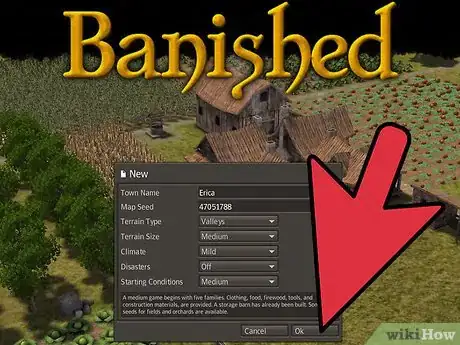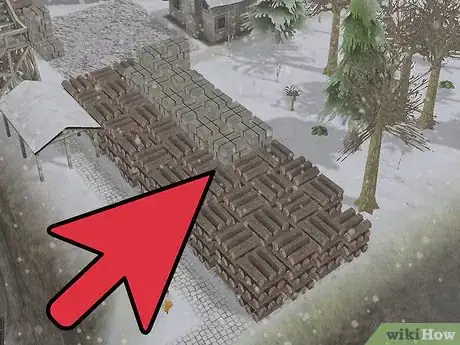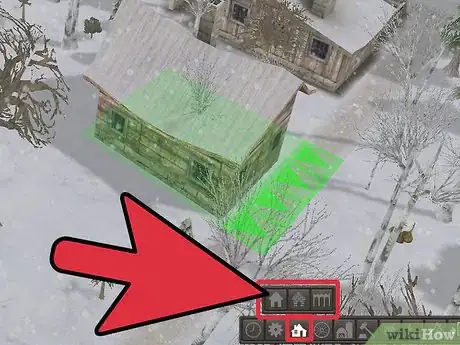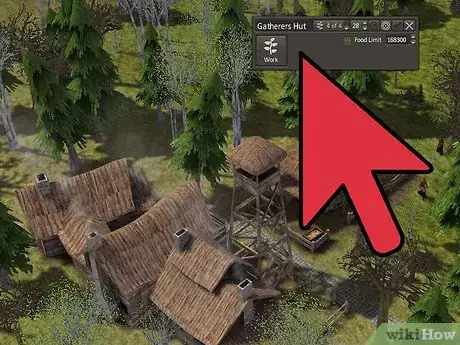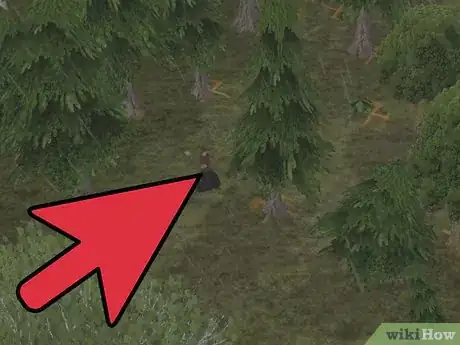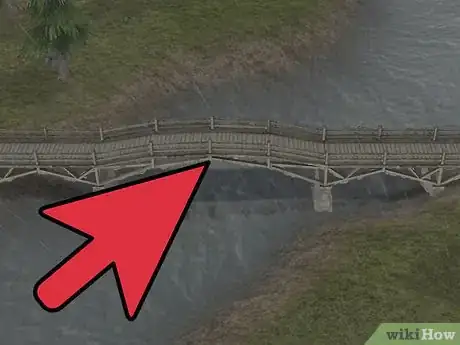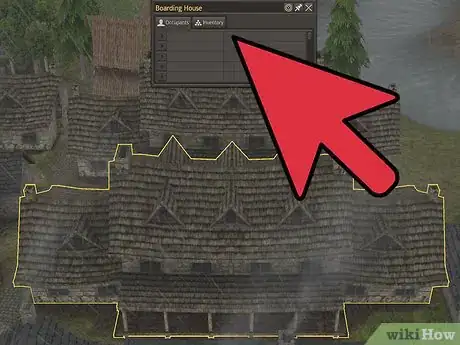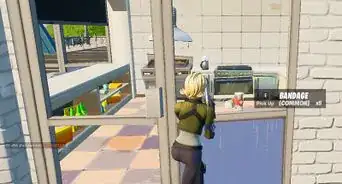X
wikiHow is a “wiki,” similar to Wikipedia, which means that many of our articles are co-written by multiple authors. To create this article, volunteer authors worked to edit and improve it over time.
This article has been viewed 78,038 times.
Learn more...
Banished is a city-building strategy game where you help create a thriving community from a handful of people, surviving harsh winters and deadly famine, and maintaining a delicate balancing act so your villagers stay alive, well-fed, and happy. Getting into the game is easy, but initial attempts at building a perfect community will most likely frustrate the novice strategy gamer. Though Banished is a hard game to master, surviving is not impossible.
Steps
Part 1
Part 1 of 3:
Starting the Game
-
1Create a new game. At this point, the game is pretty straightforward. To create a fresh game to start your adventure, you must first decide on a town name, create a random map seed by clicking the paper icon to the right side of the bar, and then select through the rest of the options you deem suited to your gaming level.
-
Terrain Type. Choose between two terrain types, namely Valleys and Mountains.
- Valleys are great for beginners as they have more flat land and forests which make for great building spaces and resources respectively.
- Mountains have a lot of uneven ground which makes constructing buildings difficult. Also, getting through one side of a mountain to the other requires tunnels that demand a lot of resources.
- Terrain Size. Choose the size of your map, from Small, Medium, and Large. Any will do, but most players prefer Medium.
- Climate. Climate determines the level of climate change in your game. Mild has shorter winters; Harsh has longer, earlier cold days; and Fair is somewhere in between. Choosing Harsh may mean starvation as farming becomes impossible. Fair is a good choice for starting gamers.
-
Disasters. This activates the possibility of disasters in your village, such as tornadoes sweeping across town and fire spreading to nearby buildings.
- There will be starvation, or possible death even, when food is scarce.
- Freezing occurs when there isn't enough firewood or coal to heat homes.
- If you have crop fields, pasture, and orchards, infestation is a possibility. During a breakout, you can also infect nearby fields growing the same crops or raising the same animals.
- Citizens in poor health are in higher danger of sickness, and Traders and Nomads increase the risk of diseases.
- This option is preferably left ON for challenges.
-
Starting Conditions. This option determines the conditions and resources you hold at the start of your game.
- “Easy” begins with six families with a large amount of clothing, food, firewood, building materials, and tools provided. Homes and storage areas have already been built, and seeds for fields and orchards are available as well as herds of livestock.
- “Medium” begins with five families with clothing, food, firewood, tools, and construction materials provided. A Storage Barn has also already been built, and you’re given some seeds for fields and orchards.
- “Hard” begins with four families with only a small amount of clothing, food, firewood, and tools. No seeds for farming are available either.
- For new players, it's best to choose Medium to give you a feel of the game, and experience the importance of resources and food.
-
Terrain Type. Choose between two terrain types, namely Valleys and Mountains.
-
2Focus on your resources. As you start the game, especially on medium or hard mode, keep a watchful eye on your resources. Low on food means your people will starve and die, decreasing the population of your town and leading to days of struggle. Fewer workers means gathering food and building homes slow down. To avoid this situation, establish a source of food such as the Fishing Dock, Gatherer’s Hut, Hunting Cabin, Crop Field, Orchard, and Pasture.
- Logs. Produced by cutting down trees, logs are use for buildings, tools, and firewood. Foresters help maintain the forest trees, and cut adult ones.
- Stone. One of the most important construction materials, it’s produced by harvesting stone piles around the map or by building a quarry.
- Iron. Used for the construction and making of tools, it is found around the map and can be harvested, or you can build a mine for constant supply.
- Firewood. Used to heat homes during cold or winter months, chop logs into firewood with a Woodcutter.
- Coal. Gained through mining or by trade, a Blacksmith can make steel tools out of it. It can also be an alternate heat source to firewood.
- Leather. Gained from operating a Hunting Cabin or by slaughtering cattle in pasture, use it to make clothes to help your people work and stay outside longer during winter.
- Wool. Gained from pasturing sheep, use it to make clothing.
- Food. It is produced by Gatherers, Fishermen, Hunters, Crop Fields, Pastures, and Orchards.
- Herbs. Collected by an Herbalist, they are your people's source of medicine to keep them healthy when their diet is poor.
- Tools. Made by a Blacksmith, they’re needed by all workers to perform their jobs more quickly.
- Clothing. Crafted by a Tailor, it is particularly important to keep citizens warm in winter.
- Alcohol. Produced by a Tavern, drinking ale can make your citizens happier.
Advertisement -
3Control your population. At the age of 10, citizens can start working. Just like in real life, people grow old and die because of sickness, disasters, accidents, or just old age. To keep your town going, steadily increase your population while keeping in mind that a sudden population boom may lead to food shortage.
- To grow your town, you need to build homes for your citizens to move in and start their families.
- Citizens become adults at the age of 10, and can start a family.
Advertisement
Part 2
Part 2 of 3:
Surviving the Game
-
1Prepare for winter. Now that you know the function of resources, start playing and plan ahead for survival. Surviving the winters and keeping your citizens from starving will be among the greatest challenges. During the cold months when you can't farm crops, gathering food is a good alternative, but remember to build your Gatherer’s Hut in the forest where edible plants grow.
- Gatherer’s Hut can be found under the Food Production tab and requires 30 logs and 12 stones to build. The maximum number of citizens working as Gatherers is 4, and it’s best to keep the number as high as possible since Gatherers, despite the bad climate, will keep on gathering food.
- If you're playing in hard mode, Gatherers are the best food source in any season, so build as many Gatherer’s Huts as you can, but keep them at a distance from each other. For maximum productivity, don’t let the range circles overlap. Don't forget to build a Storage Barn nearby for the use of Gatherers.
- If you click on a Gatherer’s Hut, details will show. You can see the Food Limit number, and once the limit is reached, no more food will be produced. Keep the food limit as high as possible, for as much food as the Storage Barn can hold.
- Gatherers produce food such as berries, mushrooms, onions, and roots.
- If you're playing in fair or mild climate, you can build a Fishing Port or a Farm to have fish and crops as your alternative food sources.
- You can build a Hunting Cabin as well for hunting deer for meat and leather. However, cutting down trees will decrease the wild-animal population so make sure to have Foresters plant saplings. As wild animals avoid areas of civilization, build Hunting Cabins away from towns.
- Pasturing is advisable as well, but animals such as chicken, sheep, and cows can only be gained from trade unless you're playing on normal or easy mode.
-
2Gather logs and firewood. A Forester Lodge defines an area where Foresters plant and later chop down mature trees for logs. A Forester Lodge should be built right next to a Gatherer’s Hut since Foresters maintain the growth of the forest. This means more root crops and forest food will be gathered.
- For areas with few trees and not maintained by Foresters, trees will naturally grow. This process, however, takes more time than when forests are maintained by Foresters.
- To build a Forester Lodge, you need 32 logs and 12 stones. The maximum Forester per Forester Lodge is 4. If you click on the building, details will appear.
- Clicking on the “Cut” button will disable or enable the cutting of mature trees. When trees are cut, Foresters will place the logs on top of the nearest stockpile.
- Clicking on the “Plant” button will disable or enable the planting of saplings. Details will also show the Log Limit, and once the limit is reached, no more logs will be produced.
- To survive the winter, your citizens need firewood to keep from freezing to death. To make firewood, you need logs, and firewood is produced by a Woodcutter.
- Found under the Resource Production, a Woodcutter requires 24 logs and 8 stones, and with 1 worker maximum. Once they produce firewood, Wood Cutters will store the firewood on top of the nearest stockpile.
-
3Build a Market and a Trading Post. If you have steady resources, food production, and population, make sure to build a Market and a Trading Post.
- A Market is used as a centralized location for all goods a town produces. Your assigned vendors will visit stockpiles and Storage Barns to collect a variety of resources for the Market.
- Build the Market at the center of your town or that part of town where you build most of your houses.
- Citizens living nearby can then just collect goods at the Market rather than go to stockpiles or storage barns.
- Since all resources are inside the Market, citizens can enjoy a large variety of food and supplies to keep them happy and healthy.
- A Trading Post is used to buy items that the town needs. It is where you can exchange resources for livestock, crop seeds, orchard seeds, meat, wool, and more.
- Since Merchants arrive by boat, Trading Posts are built by a lake. Note that lakes without access to the main river that flows through the town won't ever receive merchants.
- Merchants normally bring random goods to the Trading Post, but if you want them to bring a specific item, you can order it using the “Orders” tab.
- Make sure you have enough resources stored in your Trading Post to meet the equivalent trade amount of the item you want to purchase.
-
4Build roads and bridges. Roads make travel easier and productivity higher. Bridges across rivers, streams, and lakes give your citizens access to neighboring flat lands. The more access there is to the other side of the water, the more resources can be gathered.
Advertisement
Part 3
Part 3 of 3:
Accepting New Citizens
-
1Build a Town Hall. Build the Town Hall as soon as soon as you can as this can mean more record data overviews of the population, education, health, workers, happiness, clothing, resource limits, workplaces, acquired seeds, livestock, and many others.
- If you need more people in your town, the Town Hall allows you to invite or deny citizenship to Nomads who wish to join your town.
- Be warned that accepting Nomads will increase the risk of diseases. To avoid this, build a Hospital.
-
2Build a Boarding House. If you're planning to invite Nomads, make sure you build temporary housing for these homeless citizens until you're able to build houses for them. Especially useful after a disaster, a Boarding House can prevent people from freezing to death waiting for their new home to be built or repaired.
- Boarding Houses require 100 logs and 45 stones each to build, and by clicking the "Boarding House" button, you will see all the occupants and inventory.
Advertisement
Community Q&A
-
QuestionHow can I draw houses with a pool?
 Community AnswerYou can't. Houses do not have pools and can't have pools in this game.
Community AnswerYou can't. Houses do not have pools and can't have pools in this game.
Advertisement
About This Article
Advertisement
